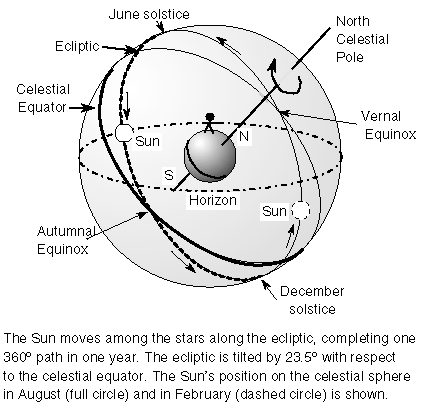 The ecliptic is the plane of the Solar System, the imaginary line across the sky that marks the orbits of the planets and the Moon. In a planetarium this can easily be shown, but under the heavens it is daunting to visualize this. I use a laser pointer to show the path across the sky, and that helps to visualize this, but right now the skies are cooperating to make this a bit easier for those of you without an amateur astronomer and a laser pointer :-)
The ecliptic is the plane of the Solar System, the imaginary line across the sky that marks the orbits of the planets and the Moon. In a planetarium this can easily be shown, but under the heavens it is daunting to visualize this. I use a laser pointer to show the path across the sky, and that helps to visualize this, but right now the skies are cooperating to make this a bit easier for those of you without an amateur astronomer and a laser pointer :-)Face South about 30-45 minutes after sunset and you will be looking toward the ecliptic. It stretches from the point of sunset to your right (West) where bright Venus gives you one reference point, then stretches up and toward the south to Castor and Pollux, the two twin stars of the zodiac constellation Gemini. Just to the upper left of the pair is bright orange Mars, and continuing left you encounter blue-white Regulus, the brightest star in the zodiac constellation Leo. Now the line of the ecliptic moves down toward the East, that is, down and to the left as you face South. Lower left of Leo is the planet Saturn, a bright, milky-white dot of light. And continuing to the lower left of Saturn is the bright star Spica, in the zodiac constellation Virgo.
Enjoy the tour, and if you have a star chart, put it to work so you can use these bright points of light to help you learn a few constellations. Even in the big city, all of these are visible.
The image on this page was copied from Nick Strobel's Astronomy Notes. Go to his site at www.astronomynotes.com for the updated and corrected version.





3 comments:
So right Paul what a opportunity we have to point out and educate on the path of the planets!
I am finding like yourself that many want to see and navigate this path and most folks are please when they discover that it is easily located, and observed. Even with my street programs whenever I talk planets their walk way is discussed.
Thanks for this link to astronomy notes - lots here to use!
Sounds like you have a whole bunch going on - right on our radio astro guy! Can you send me email updates as to what your doing when and where? Thanks!
Great article. It's a great time to see all the planets lined up on the ecliptic at present (even better a couple of weeks ago when elusive Mercury looked so stunning). As always Saturn's my favourite... looks awesome with a 9mm eyepiece and Barlow!
This weeke has been a good time to point out the ecliptic, with the Moon back in the evening sky to help guide the way.
Post a Comment